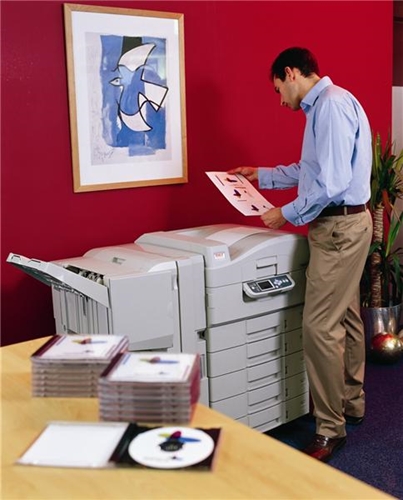Everyday office operations are littered with seemingly insignificant expenses that can add up quickly. If managers don't get a handle on these costs, they may find their budgets spiraling out of control. Office leaders should take every opportunity to reduce unnecessary spending and boost the bottom line. By doing so, businesses can maintain healthy growth and development and avoid having to make difficult decisions regarding personnel and other factors to remain in the black. The key is to eliminate many of the unseen expenses that lurk just beneath the surface of office processes.
Office managers may not give a second thought to their printer usage, for instance, but an inefficient approach can easily translate into a great deal of unnecessary expenditures. According to Pacific Office Automation Albuquerque, many organizations misuse their ink and toner supplies, driving up costs as they deplete their stock quicker than they should be. Employees are often unaware of how to wring the most value from these resources, or are simply apathetic. Managers should take steps to streamline the use of these assets so they last longer and are restocked on an occasional basis.
Ink and toner may seem like negligible expenses, but they remain the boon of many office budgets. According to the New York Daily News, an ounce of printer ink can be more expensive than a similar amount of champagne. The news outlet reported that toner may reach prices that are approximately 30 times higher than those of some libations from Moet and Chandon – a premiere purveyor of high-quality champagne. The source cited Consumer Reports research which found that the cost of a gallon of printer ink was equivalent to more than 2,000 gallons of gasoline.
Get more value from office equipment
Representatives from Pacific Office Automation Albuquerque explained that companies can make better use of their toner stores to drive down their operational costs. In particular, managers can employ office automation solutions to use as little ink as possible while still meeting the everyday demands of the organization. For example, employees may waste expensive ink creating color documents for internally circulated materials. In most cases, this is an unnecessary waste of resources and can be easily avoided by leveraging OA solutions to make the right distinctions regarding ink and toner usage.
"Ideally, every office would already have the proper technology in place, technology that is suited to the company's specific needs," said a representative with Pacific Office Automation Albuquerque. "It is important for a company to first take stock of the office automation products that they use and to determine whether those products indeed meet their specific needs. … Print track and control can help managers maximize their resources and minimize waste. It can also help to keep documents from being printed unnecessarily or accidentally, and can eliminate duplicate print jobs."
The benefits of OA technology go far beyond printer management, however. Demand Media writer Aurelio Locsin explained that automating internal processes across the office streamlines mundane and time-consuming tasks while allowing organizations to get more productivity out of their personnel. In addition, employees are provided more freedom to collaborate and work toward a common goal.
"[OA] allows a few employees to perform the tasks of many, such as when one machine automatically chooses, packs and labels products for shipping," Locsin wrote. "Automation enables people with lower skill levels to perform higher-level tasks, such as when a clerk creates an attractive and compelling presentation by typing text into software templates that pull in third-party pictures, videos and music. Automating information systems reduces storage space, speeds retrieval and allows several employees to access the same data at the same time."
Better performance = lower costs
To gain the full benefits of OA, businesses will need to have the highest quality components in place supporting these assets. With such equipment that is so focused on the transfer of data between two end points, adopters should invest in a sophisticated tool to handle data storage and processing needs. SD cards are typically the platform of choice for various OA-based hardware including multifunction printers. To avoid replacing these devices at regular intervals, businesses should invest in durable components that will stand the test of time. Panasonic's line of industrial-grade SD cards fit the bill, providing a range of features that ensure their continued viability.
If an organization suffers a sudden electrical disturbance or outage, for instance, the power failure robustness capabilities built into Panasonic's products ensure that damage to stored data is minimized and that this vital information is safeguarded as much as possible. In addition, automatic data refresh helps to identify the numerous bit errors that will inevitably occur when devices attempt to read data. Taken individually, these flaws are insignificant, but given enough time to accumulate, they may cause notable performance issues.
Durability ensures these devices remain operational for years on end, but without their high level of performance, they wouldn't provide much value to an organization. With some models reaching read and write speeds of 95 Mbps and 35 Mbps, respectively, Panasonic's line of industrial-grade SD cards will continue benefiting the office for the foreseeable future.


Recent Comments